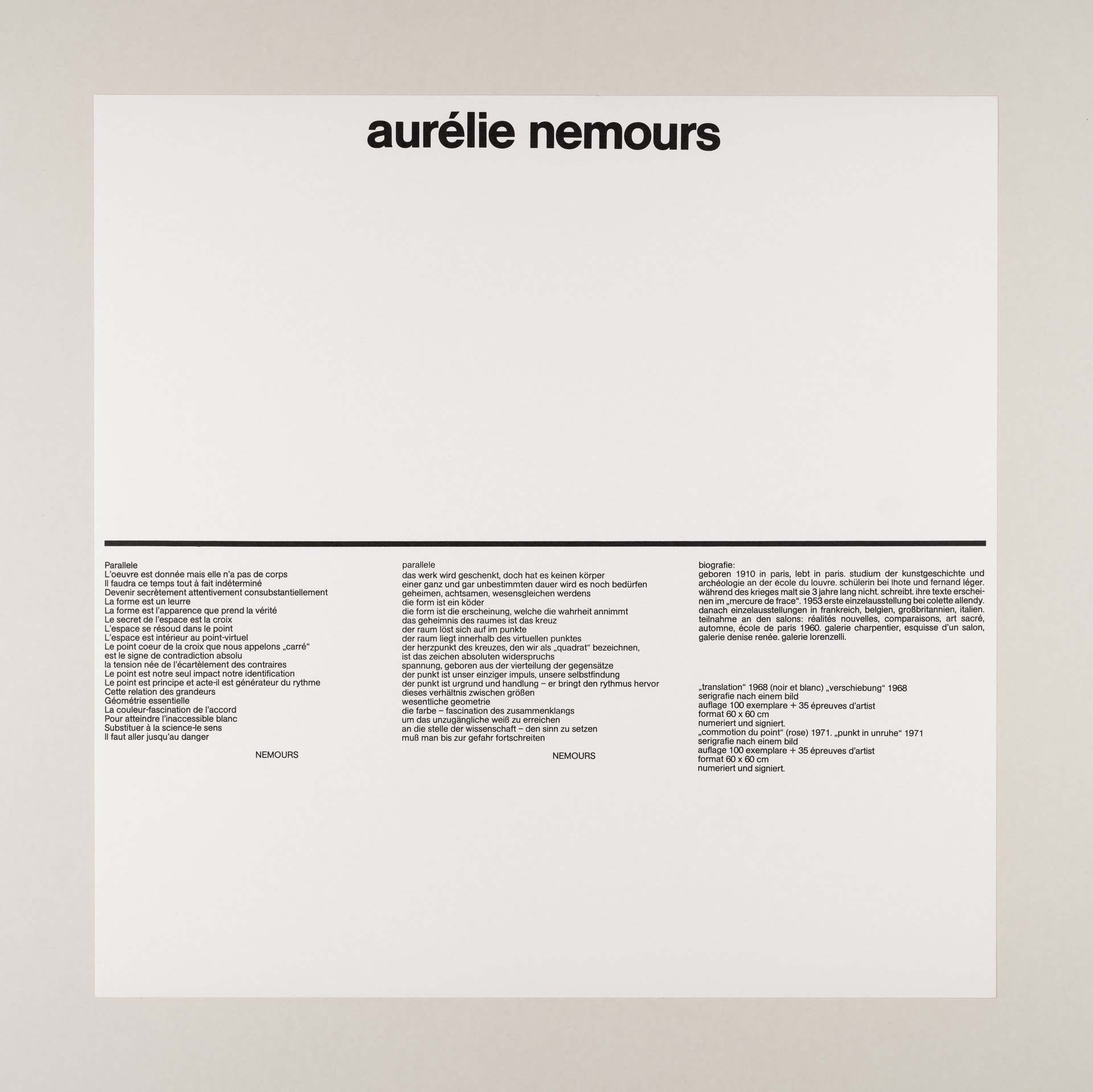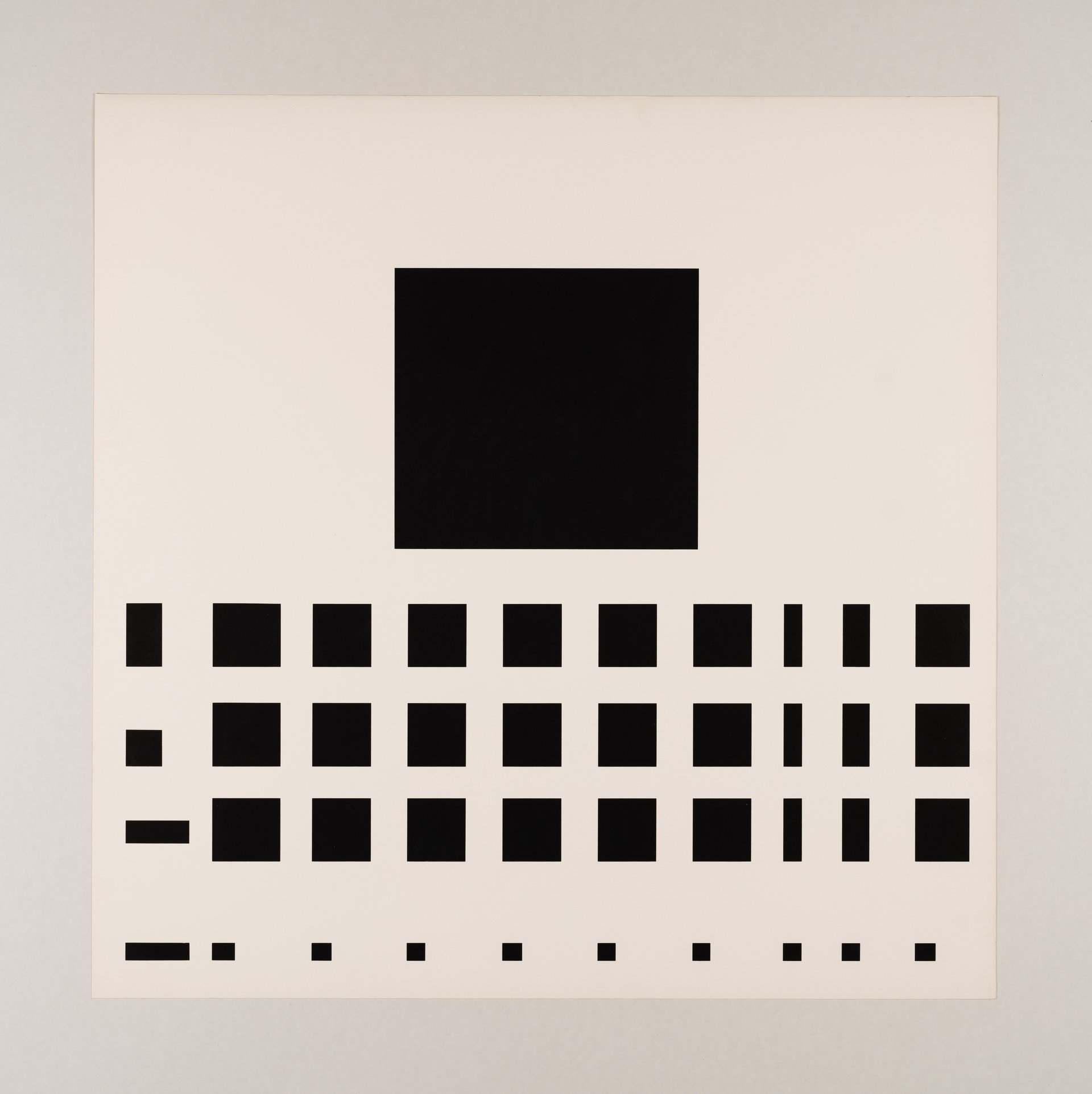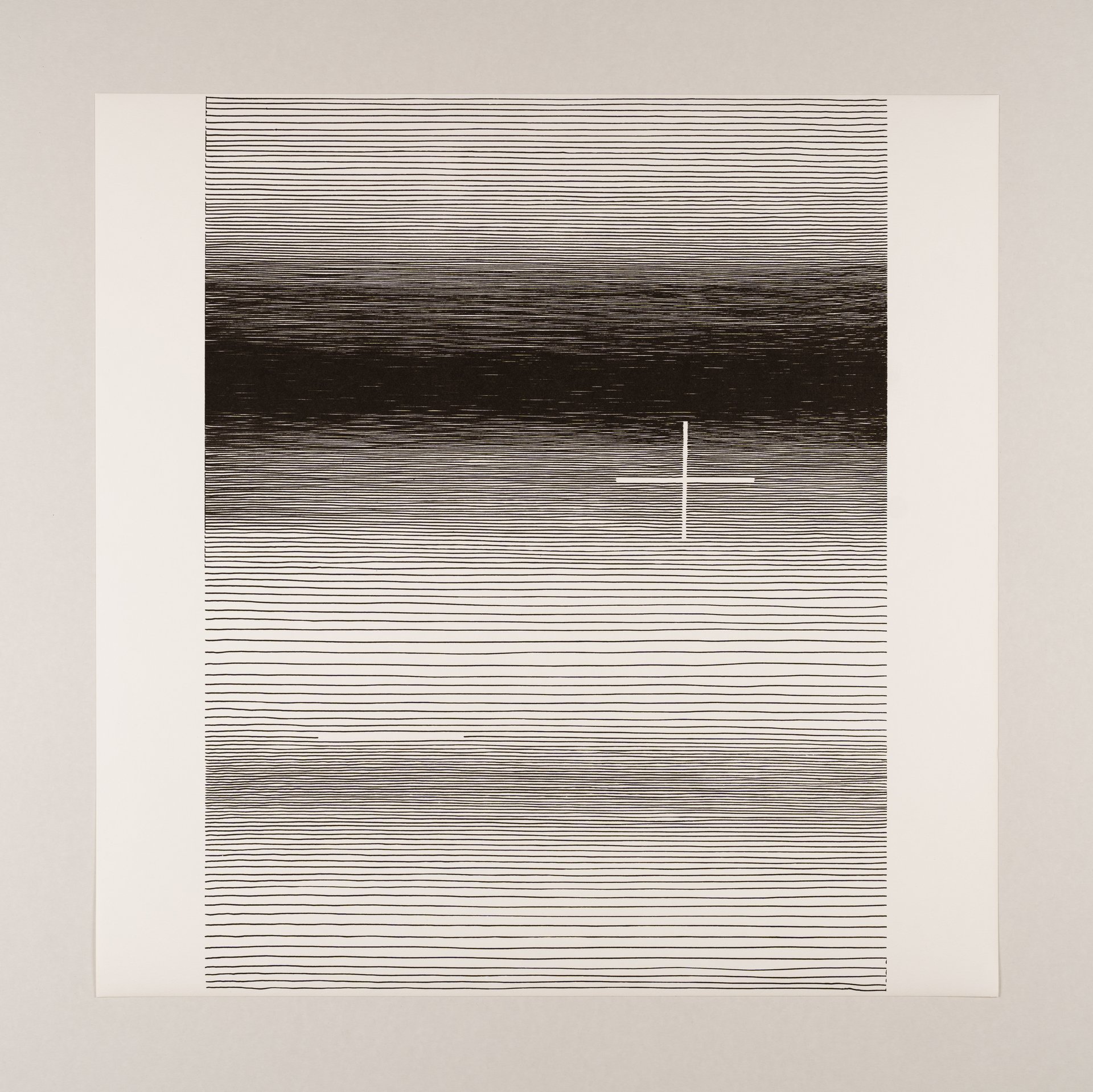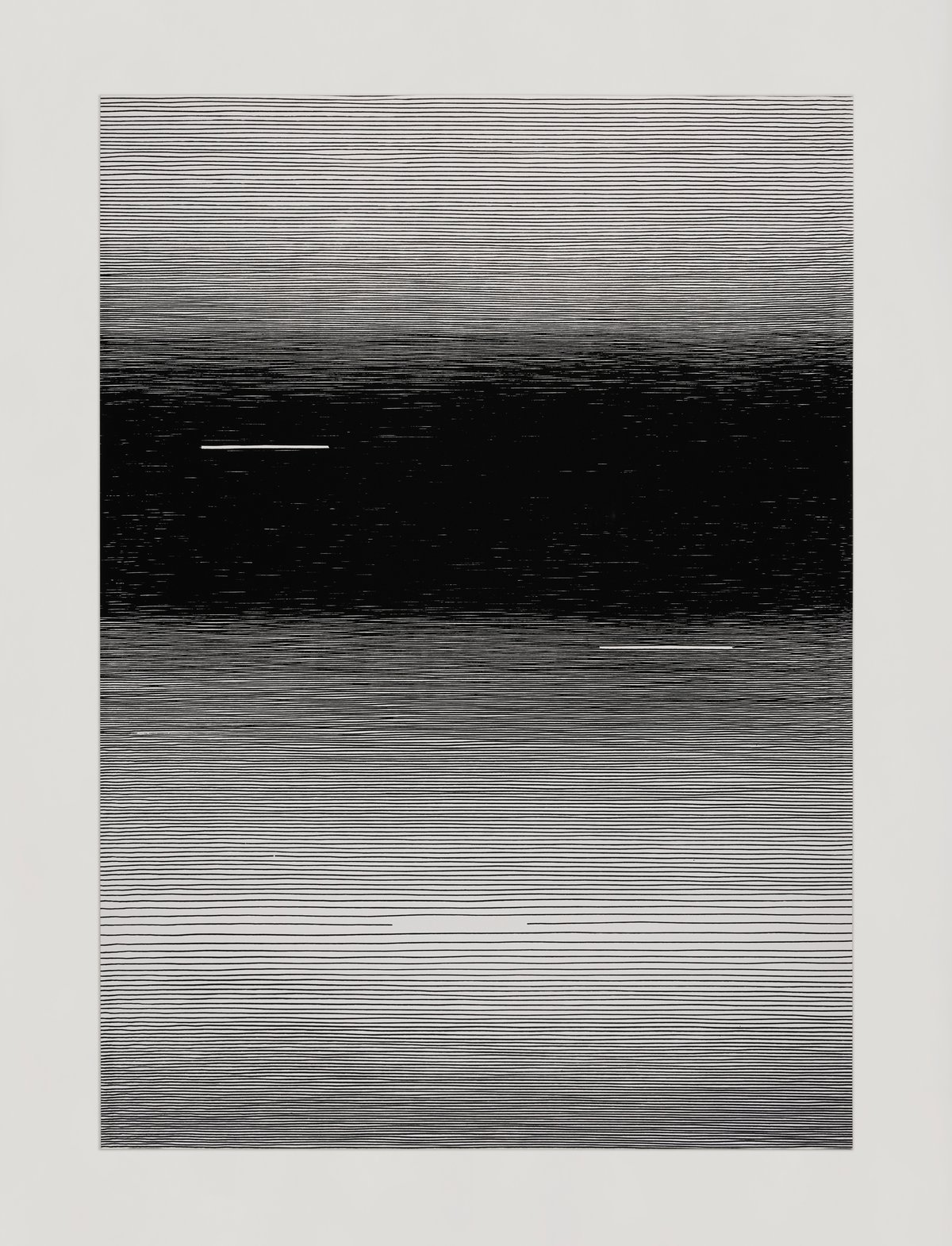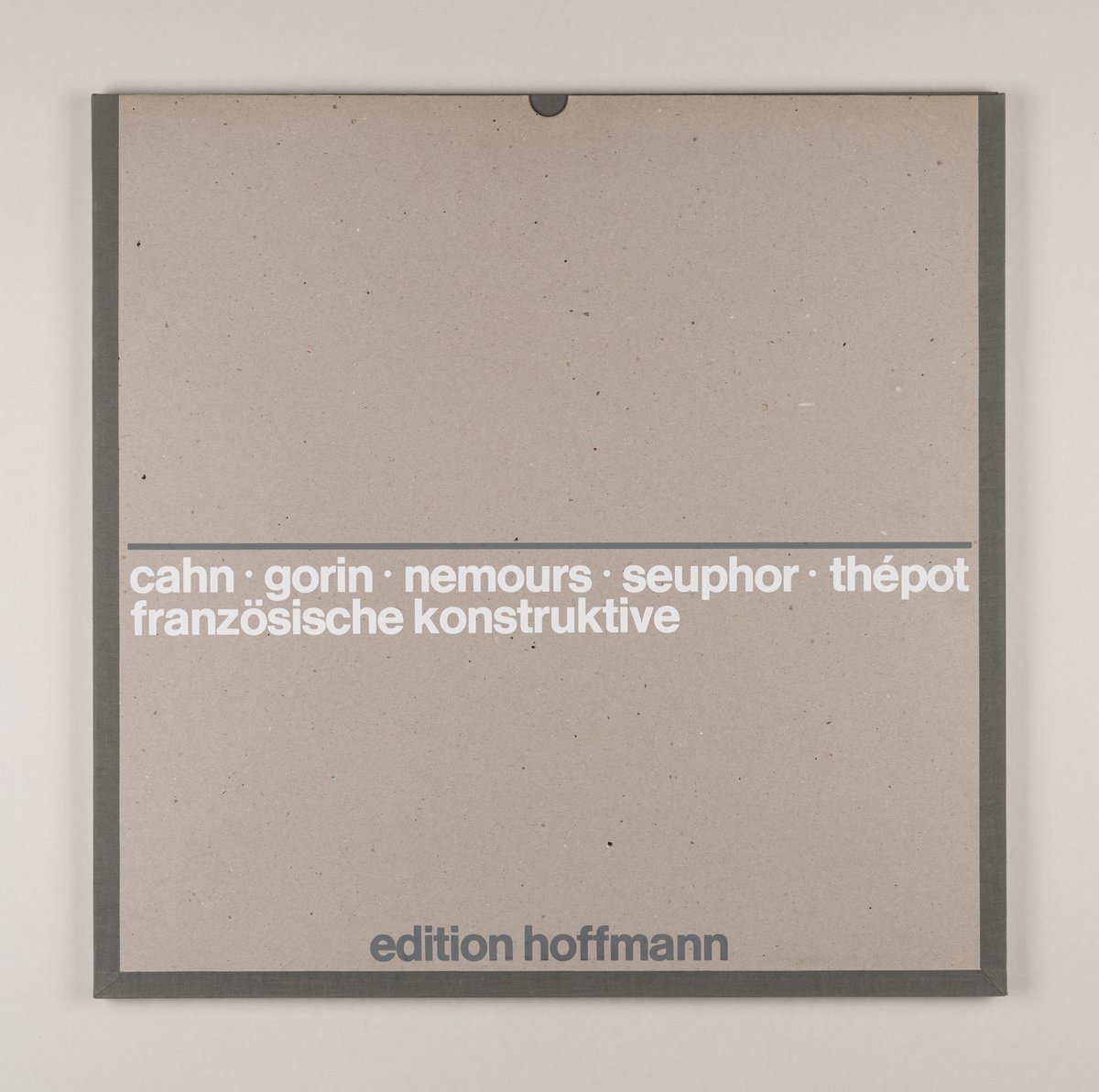it has often been said that france is inherently opposed to geometric art. however, the role played by cubist painters in the development of this century towards geometry and the decisive influence they exerted on the russians has been somewhat quickly forgotten. and is it not also paris where mondrian drew the most radical conclusions from cubist ideas and painted his most classical neo-plastic pictures between 1928 and 1932?
it is also true that for many years jean gorin was his only french student. incidentally, both were completely unknown to the public. those who lived in this period between the two wars know that the reason for this emptiness is to be found in the surrealist reaction and in the great advertising noise that accompanied it.
for some years now, things have evolved considerably, in france as elsewhere, the country of descartes or the encyclopedists could not remain insensitive to the universalism of geometric abstraction for long. young people practicing it are now as numerous in france as in the other european countries.
the portfolio presented here is limited to five names and thus shows those who have been on this path for a long time and who are still alive and not slowing down in their production, two outstanding women, marcelle cahn and aurélie nemours. the one is entirely devoted to solid, measured architecture; the other, light and cheerful, is no less fascinated by the essential. like gorin, who is finally enjoying the worldwide reputation he more than deserves for his work and his honesty, marcelle cahn was involved in the 1930 exhibition “cercle et carré” (circle and square).
without a doubt, thépot is the most qualified representative of the following generation. i know few examples of such a demanding attitude as his. his paintings are black diamonds that he makes vibrate under the impact of a color that is always the only one.
finally, it was requested that i add my horizontal line, my flowing trace, my signature.
michel seuphor, paris, february 1973
for my work, it is the most unnoticed, smallest objects that are essential. for me, these nothingnesses of daily life are bearers of revelations, of material being. i love the elementary, not the luxurious.
this perception of silent existences is fundamental. i have lived a lot in solitude, identified with it. hence a parable.
in 1960 i incorporated the sphere into my work. first on surfaces, in recent years also in my spatial structures (spatiaux). for me, the sphere identifies a four-dimensional sense of space.
marcelle cahn
towards a new expression in constructivism
as mondrian said, the orthogonal in neoplasticism contains a version of the dynamic values in a constructive system directed towards absolute equilibrium.
in contrast, elementarist constructivism reveals antistatic compositions and expresses spatial dynamics that move in oblique directions, thus opening up a new pictorial and plastic dimension.
as for me personally, since 1936, i have listened to and tested the elementarist technique, to my satisfaction and without abandoning neoplasticism, because inwardly i need two rhythmic systems to express myself. i have always reserved this freedom for myself, namely to use one or the other technique according to the chosen theme and the aesthetic inspiration of my mental state, just as i use the circle as a basis for composition and as an expression of unity from the infinitely small to the infinitely large, and have done so since 1936.
the antistatic instability in the plastic equilibrium of the relationships is expressed more vividly in an oblique orientation of the composition, and i do this with an infinite number of angles of inclination. these technical subtleties naturally correspond to the different artistic temperaments.
jean gorin
parallel
the work is a gift, but it has no body
it will still need a completely undefined duration
secret, attentive, essential becoming
the form is a decoy
the form is the appearance that takes on truth
the mystery of space is the cross
space dissolves into the point
space lies within the virtual point
the central point of the cross, which we call the “square”,
is the sign of absolute contradiction
tension, born of the fourfold division of opposites
the point is our only impulse, our self-discovery
the point is the original reason and action – it creates the rhythm
this relationship between magnitudes
essential geometry
the color – fascination of harmony
to reach the inaccessible white
in the place of science – to put meaning
one must progress to the point of danger
aurelie nemours
“the system and the rule”
the system is to the professional philosopher what the rule is to the reasonable person. the system naturally tends towards hegemony, towards a kind of totalitarianism or intellectual imperialism. it is a form. the system does not engage in dialog, it wants to be monolithic and irrevocable. whoever confronts it is defeated by it and mercilessly cut down to size.
the rule, on the other hand, is not a machine. you operate it. you are not made by it: it is made for us, for our use. it does not claim to be complete in itself, as the system does; it is only a detail of our way of life, but a detail that accompanies us and guides us. there is always a possibility to loosen the rule a little, to deviate from it, as from an ideal path, but without losing sight of it. you can say: “maybe...”, while the system prescribes a clear and unmistakable “yes” or “no”.
the straight path that i took a long time ago and to which i have remained faithful is a rule of life for me, a kind of voluntary poverty. it is not a process, as some might think, because it offered itself to me organically, so to speak, at the end of a long evolution of my linear games. it is not even a method in the strict sense, but rather the reduction of the plastic means to their simplest expression, to what one day seemed to me their most complete exposure and most natural unity: the horizontal straight line.
when i work in my direction, it is not out of principle or blind subservience, but out of joy.
if i have never neglected it in the last fifteen years, it is probably because the pleasure is constantly renewed. i now know that it can vary infinitely, that the pleasure in my rule is inexhaustible.
by the way, my rule is not very strict, it doesn't want to be rigid at all.
i never apply it absolutely. the line is of course straight, always horizontal, but it can be felt at every point along the line. that's because i can only imagine the line freehand and without any material rule. nevertheless, i want the line to be straight, as straight as possible: the string only sounds when it is taut.
it is the rule that guides me in the pen itself; it has integrated itself into my hand, it is in my fingers, it is in the blood that flows through my fingers and from which the long stream of black ink flows naturally.
like on a walk, i stop where i want, i let the sky float above me and permeate me, i let time flow for itself without filling it and i see that this time - the gap - is more alive than the time we fill with activity.
my line is never alone, it connects with other, parallel, similar lines.
it is a society of lines and my population varies greatly in density. sometimes there are parties when i introduce the color with the help of glued papers. but the light is always celebrated. it is celebrated because it is present, omnipresent and light. it lives between the lines. it is she who sings. and the lines accompany it, support it with their modulation. they moderate the flame. if you look closely, the lines only serve to limit the expansion of the light, but in doing so they move it internally, they sensitize the cry.
michel seuphor
writing is the language of scholars and writers and a universal means of communication, this language uses agreed signs with which it expresses in different and subtle ways all the feelings and abstractions of the human soul.
color and forms are the language of the artist, this language also sets signs; these signs are the means that serve to inform the viewer and to project in his mind certain quantities and qualities of emotions and suggestions... but of what? and here lies the misunderstanding, the stumbling block, because even if writing is a universal means of communication, with universally known symbols, in the realm of art it is different. each artist has his own personal code and his own alphabet of signs, and the more identifiable these signs are in form and color, the more we are inclined to believe that the one who possesses such a language is an artist with a less ordinary personality.
what does this code consist of? what are these signs? at first glance, it appears to be the repetition of certain constants, a kind of “monotony in the unchanging”.
who would ever confuse the constants of a rembrandt with those of a rubens, the invariables of a villon with those of a picasso? the art critic is familiar with these variations in expression; but this is not the case for the public, which is little informed and has a serious desire to be part of a means of communication that transcends them. writing is not my language and i present in this portfolio an example of what is for me my usual mode of expression, with some of my constants in formal structures and colors. in the field of form these constants consist of polygonal, orthogonal or combined structures, in the field of color they are determined by the invariants in the modulation of black, blue, blue-red and white-blue-red what do these signs seek to express? merely an attempt to express and materialize myself as a whole human being; for what remains, after all, when the “isms” of all shades and the most sophisticated theories have been played through and replayed ad nauseam? what remains is the human being with his particular message and his medium or means of conveying it, his personal technique: reading in this medium is the key to understanding the message.
françois thépot









